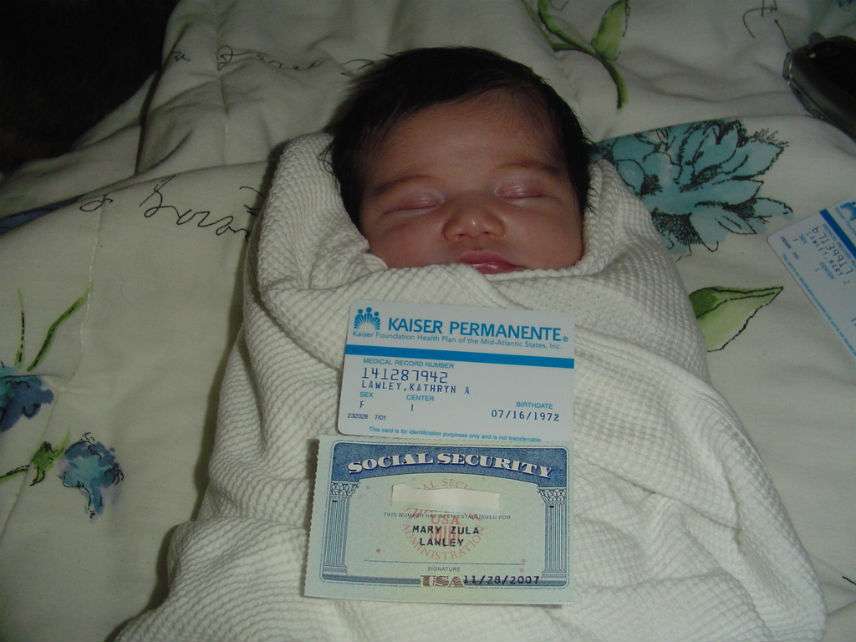Ivanka and Conservatives Want to Raid Social Security to Pay for Parental Leave
It's the conservative version of cradle-to-grave welfare.

Some conservative lawmakers, along with First Daughter Ivanka Trump, are contemplating a scheme to use Social Security funds to help new parents take paid time off from work. It's a clever idea that certainly avoids some of the problems with rival parental leave plans. Still, this is a flawed proposal that'll do more harm than good, including to its intended beneficiaries.
The plan is the conservative answer to the liberal lament that America is the only industrialized country that doesn't offer government-mandated paid parental leave—although many companies do so voluntarily. Authored by the Independent Women's Forum's Kristin Shapiro, the idea is simple and elegant: It would let working parents collect Social Security for up to 12 weeks after childbirth so long as they agree to postpone retirement benefits for an analogous time later.
A woman who enters the workforce at 21, Shapiro estimates, would earn an average of about $31,000 by the time she has her first child at the age of 26. Using the formula deployed to calculate Social Security disability benefits, Shapiro estimates that this would make her eligible for $1,175 a month for three months, or about 45 percent of her wages, roughly comparable to what other rich countries offer. On the back end, she would only have to forego retirement benefits for a matter of weeks to make the numbers work. Also, since Social Security disability payments are means-tested, poor and middle-class couples would get more relief than richer ones, targeting help to those who most need it.
At first blush, this seems like a win-win-win. Deferring retirement benefits for a few weeks doesn't involve great hardship to older people—whereas collecting early would potentially make a meaningful difference at the hardest times in the lives of young couples. Also, because couples are basically borrowing against their own future benefits, the program is self-funded and would require no new government spending or taxes. Likewise, employers would face no new expense either.
So what's not to like? Well, plenty.
For starters, just because employers don't have to fund the program doesn't mean there would be no cost to them. The scheme will incentivize more workers to take off and for longer periods of time. This will be especially disruptive for small businesses and start-ups that operate on a shoestring budget and can't spread the responsibilities of the absent workers across a large workforce. They will inevitably shy away from hiring young women of childbearing age. This will diminish these women's job options. And for what?
The sum total of the average benefit over three months works out to $3,525. With a little advance planning, many couples can save that amount in a couple years before having children, so long as they can both find work. But if one of them can't, the lost wages may add up to far more. In other words, many couples would have no net financial gain from this scheme, but could face a potential net loss.
Furthermore, it isn't like Social Security has a ton of spare cash lying around to dole out to people other than retirees. The program used to generate surpluses when its worker-to-retiree ratio was high. But this ratio has dropped from 42 workers to one retiree in 1945 to less than four workers per retiree now. And even though payroll taxes have gone up from 2 percent at the program's inception to 12.6 percent now, the system is still taking in less money than it is paying out in benefits, because of all the retiring baby boomers. In theory, past surpluses are covering the rising burden. But in fact, these surpluses were spent as they were collected, so there is no actual piggy bank full of cash to draw from. If Social Security funds are used to pay for parental leave, it would mean even less money to cover retirees. They would either face benefit cuts or would have to be paid either by drawing funds from other programs or by raising taxes on everyone else.
Shapiro and co. are also selling the program as a back-door way of creating personal savings accounts by giving individuals more control over their own funds, long a goal of conservative reformers. But the Mercatus Center's Veronique de Rugy notes that personal accounts are fully funded defined contribution plans that empower the individual and shift away from the highly underfunded defined benefit portion of Social Security. (The system's unfunded liabilities over 75 years exceed $8.6 trillion.) "The paid family leave idea moves in the opposite direction by adding further short-term financial stress on the system and expanding the government's involvement into a new benefit," points out de Rugy. Translation: more government spending and more debt.
It is also beyond naïve to think that once the government is allowed to dip into Social Security to pay for family leave at childbirth, it'll simply stop there. Why shouldn't families taking care of old and sick parents get a similar deal? Liberals are already floating proposals to use Social Security for student loan forgiveness. The possibilities are endless.
As with most technocratic solutions to complex problems, the family leave plan suffers from tunnel vision that causes it to ignore unintended consequences. It's a nice try. But conservatives pilloried President Obama when he used the life of the mythical Julia to push cradle-to-grave welfare policies. If they now rob the grave to pay for the cradle, they will inspire liberal schemes for other stages of life in-between.
They should strangle their ill-advised plan in the crib.
A version of this column originally appeared in The Week


Show Comments (117)